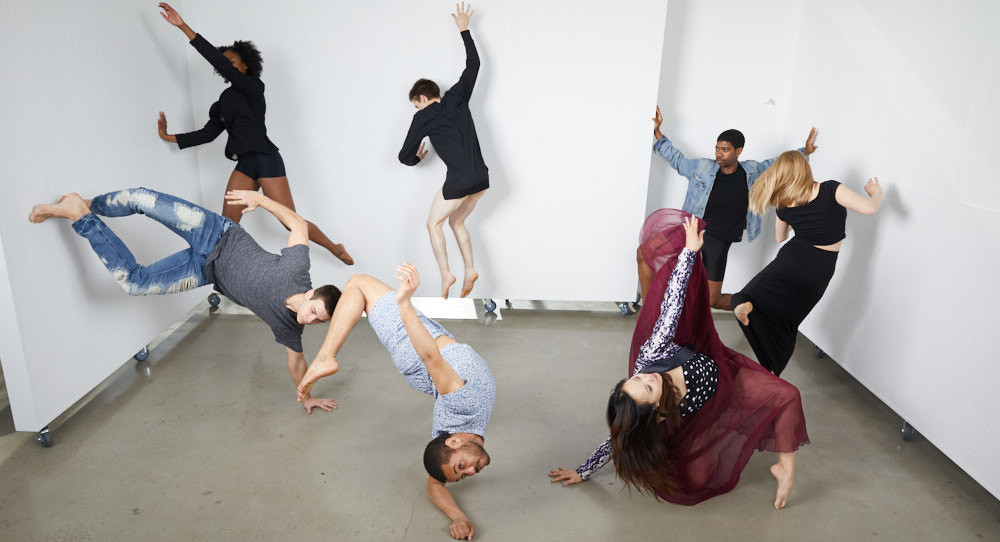Urbanity Dance, a prominent name in Boston’s vibrant dance community, is taking an exciting leap forward. Known for its dynamic programs and commitment to inclusivity, Urbanity Dance is expanding its footprint with a stunning new space at 725 Harrison Street in Boston, MA. This expansion signifies not just growth for the organization but also a significant boost to the urban dance landscape of Boston.
 Urbanity dancers in the company’s new space. Photo by Eli Akerstein.
Urbanity dancers in the company’s new space. Photo by Eli Akerstein.
This strategic expansion is made possible in part through the generous in-kind contributions of developer Peter Roth. Anticipated to open its doors in the fall, the new facility will empower Urbanity Dance to amplify its core mission: to engage, inspire, and empower individuals and communities through the transformative power of dance and movement. This commitment has made Urbanity Dance a cornerstone of the Boston arts scene, offering diverse programs for both seasoned dancers and those new to movement.
Urbanity Dance is not just a school; it’s also a celebrated professional company known for its athletic and unique movement style. The 11-member company regularly captivates audiences with an annual revue and various innovative projects. Company members, along with a talented roster of instructors, contribute to Urbanity’s vibrant educational programs, teaching both at their studios and across the Boston community. Further information about Urbanity Dance’s mission and impactful work can be found on their website, Urbanitydance.org.
Crucially, this expansion is additive; Urbanity Dance will maintain its operations at its current South End location. This dual-location approach underlines the organization’s growth trajectory and its deepening roots within Boston. Dance Informa engaged in a conversation with Betsi Graves, Urbanity Dance’s Artistic Director, to delve into the implications of this expansion and the exciting prospects it unlocks for the company and the wider Boston dance community.
More Adult Dance Classes in Boston: Responding to Community Demand
A primary advantage of the new space, as highlighted by Graves, is the capacity to significantly broaden the adult class offerings. Urbanity Dance has experienced a surge in requests for a wider array of adult dance styles. Previously, the focus had to be on expanding class availability within existing styles to accommodate waiting lists. Now, with the additional space, Urbanity can finally diversify its curriculum and cater to this growing demand for adult dance education in Boston.
 Betsi Graves. Photo by Eli Akerstein.
Betsi Graves. Photo by Eli Akerstein.
Graves points out that Urbanity Dance, alongside Boston Ballet, stands as one of the few institutions offering adult dance classes in downtown Boston. This highlights Urbanity’s crucial role in providing accessible dance opportunities for adults in the city center. Adults flock to dance classes for various reasons, Graves notes, including “to connect to spirit, to be in community and to get away from their phones for a bit.” This underscores the vital social and wellbeing aspects of dance that Urbanity nurtures.
Anticipated additions to the class schedule include popular styles like Salsa and Brazilian Zouk, adding to the already diverse range of dance forms offered at Urbanity. Graves also enthusiastically envisions establishing a home for a beginner hip hop crew within the new space. This initiative would provide valuable performance opportunities for adults, including those who might not have extensive prior dance experience, further embodying Urbanity’s commitment to inclusivity.
Beyond the Studio: Expanding Organizational Capacity and Community Reach
Graves touches upon a poignant reality in the dance world: the limited performance avenues for dancers beyond their early twenties unless they are part of a professional company. Urbanity’s new adult hip hop crew and expanded class offerings directly address this gap, creating pathways for adults to continue performing and engaging deeply with dance. “It’s the only art form wherein you have to ‘put away your paint brushes’, so to speak, in your 20s,” Graves reflects, emphasizing the importance of creating ongoing opportunities for adult dancers.
Beyond expanded class and performance offerings, the new location will also provide formalized office space for the Urbanity Dance staff. Previously operating without a central office, staff members worked remotely from homes and cafes. This dedicated office space will streamline operations and enhance organizational efficiency.
Furthermore, the new space will feature areas suitable for hosting fundraisers and other events, not only for Urbanity Dance itself but also for other organizations through in-kind contributions or rentals. This positions Urbanity Dance as a community hub, supporting the broader non-profit and arts ecosystem in Boston.
While initially not designed as a performance venue, Graves suggests the possibility of adapting the space into an informal performance setting in the future. However, she emphasizes the importance of being mindful of the residential neighborhood and mitigating late-night noise concerns. “We definitely want to maintain good relationship with the neighbors,” Graves affirms, highlighting Urbanity’s commitment to community integration.
The Urbanity Dance sign symbolizes their expanding presence and dedication to the Boston community.
This neighborly spirit extends to Urbanity’s vision for community engagement. Graves expresses a strong desire to involve local residents in future performances and movement projects, offering them opportunities to actively participate in the dance-making process. She envisions a spectrum of inclusive events, from informal showings to open dialogues about dance, all designed to foster community connection.
“We’re here to be a resource for the local community. Period,” Graves asserts. “If the space is there, can it truly be a force for good?” This ethos of community service underscores Urbanity Dance’s deep commitment to making dance accessible and impactful for everyone in Boston.
In a world that often feels fragmented, spaces for creation, collaboration, and community are more vital than ever. Urbanity Dance’s expansion in Boston is a testament to the enduring power of dance to build community, inspire individuals, and enrich urban life. All indications suggest that Urbanity Dance will leverage its new location not only for its organizational advancement but also to serve as a powerful resource for the Boston community and beyond, solidifying its position as a vital force in the city’s cultural landscape.
For more information about Urbanity Dance, including their class schedule and upcoming performances, please visit www.urbanitydance.org.
By Dance Informa Partner.

